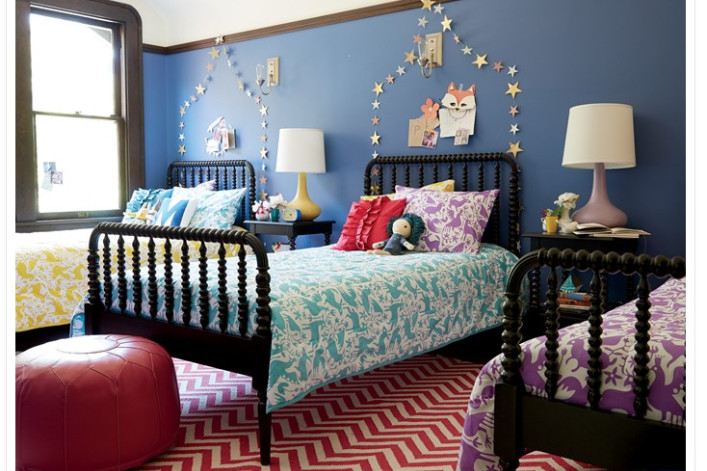Expert room-sharing tips for New York City kids

In honor of Roommates Week, we’re dedicating our family column to the original roommate arrangement: siblings sharing space. Here, New York City-based organization expert Lisa Zaslow, founder and CEO of Gotham Organizers, shares her top tips for harmonious co-existence in a single room—a scenario with which NYC kids are often all too familiar.
Choose a better bed. Bunk beds are a tried and true solution for saving space in shared rooms, but there are other options. For kids who are too young to use a top bunk, a bed with a trundle underneath that can be pulled out at night time is a better solution. For older kids, loft beds offer personal space—for a desk, dresser or other storage—beneath each mattress. Beds with built-in drawers can help siblings keep their clutter under control and within easy reach. And if your budget allows, various Murphy bed systems— a desk that turns into a bed and a bunk bed that hides in the wall—can help conserve space while increasing a room's work and play areas.

Divide and conquer. If the room is big enough, create separate zones for each child so they can have their own spaces within the room. Try marking each child’s territory with a coordinating rug (say, one pattern in two different color palettes). Painting different parts of the room a different color or using different wallpaper (again, coordinating to keep the design of the room cohesive) can also create a sense of separate space.

Create some privacy. If privacy is in order (when the siblings are widely disparate in age or are of different genders), hanging a floor-to-ceiling curtain from a track mounted on the ceiling, like in a hospital room, is an easy fix. A floating bookcase or screen can also help divide the room. If the space allows, consider installing a temporary wall, just like post-collegiate roommates do.

Maximize storage. Add tall bookshelves—anchored to the wall for safety—to maximize storage. Fill them with books, toys and even bins for clothes, if necessary. Assigning higher shelves to older children and lower shelves to younger ones helps with organization and discourages little hands from getting into their older sibling’s stuff. It’s a good idea to keep kids' clutter to a minimum by donating or selling outgrown toys and clothes on a regular basis. Purge older items before or after birthdays or holidays, when new stuff comes in. And you can create space in a shared closet by installing an extra closet rod below the standard one (kids don’t need space for long-hanging clothes) and fill it with slim kid-sized hangers, color-coordinated for each child so it’s clear whose clothes belong to whom.

Finally—get a white noise machine. If one or more of your kids is a light sleeper, it may just be everyone’s saving grace.
Related:
One family's ingenious solution to the sibling room-sharing dilemma
8 reasons your children should grow up in New York
How to find a family-friendly building in the Financial District, and beyond


























